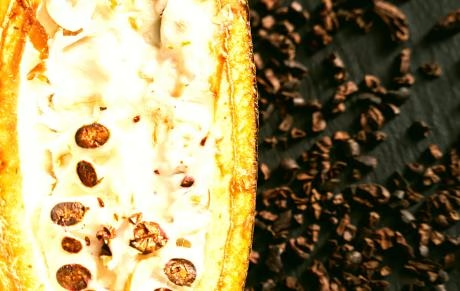Bitter melon pairs perfectly with sweet and bitter dishes. Summer is bitter melon’s peak season, and it’s not just the flesh that’s nutritious; the inner membrane and seeds also offer nourishing and therapeutic benefits. Have you ever cut open a bitter melon and found the seeds have turned red? Is it still safe to eat?
The bitter melon sac is a savior for the “three highs” (high cholesterol, high blood sugar, and high blood sugar)!
Nutrients vs. Parts
- Bitter melon seeds are rich in a variety of nutrients, including momordica charantia, protein, oleic acid, fiber, and carbohydrates, and have warming and tonic properties. They also contain a special protein called “polypeptide” that mimics insulin and was one of the first ingredients discovered to help lower blood sugar.
- The inner membrane, the bitterest part of the bitter melon, is also high in crude fiber and can help clear heat and reduce internal heat.
- Bitter melon pulp is approximately 90% water. Momordica charantia (a sugary triterpenoid compound) that can lower blood sugar levels is primarily found in the pulp. It is more water-soluble than momordica charantia and can be extracted by boiling. It promotes glucose absorption and helps control blood sugar.
- If the skin has minor bruises or cracks, local excision is recommended.
- Infestations of pests and diseases, or scars from bee or insect stings, indicate internal rot.
Choosing Tips
- The appearance should be intact and straight, with no signs of bruises or insect bites.
- The skin should appear smooth and shiny.
- The larger and fuller the nodules, the thicker and juicier the flesh.
- Master the art of removing the dross and retaining the essence to ensure optimal nutrition
Don’t throw away bitter melon seeds if they turn red
Normal bitter melon seeds should be white-yellow, but when fully ripe, the protective coating (seed coat) surrounding the seeds turns orange-red. After turning red, the seed coat retains the bitter melon aroma, but with a hint of sweetness. Those with hot and dry constitutions can eat it raw.
Generally, fully ripe bitter melon is softer and its bitterness is much less pronounced.
Braise the whole bitter melon and juice it to preserve its nutrients
Right after buying bitter melon, soak it in water for 3-5 minutes to hydrolyze the pesticides. Then, use a soft-bristled toothbrush to carefully scrub it, following the warts and the head and tail where dirt easily gets stuck.
Cut the bitter melon into 4-5 small pieces, leaving the head, tail, seeds, and membrane intact. Blend and drink the juice directly for a higher vitamin C intake.
Alternatively, deep-fry it, drain the oil, and add your favorite sauce to taste. Then, steam or stew it to fully absorb the seeds, membrane, and other nutrients within the bitter melon sac!
Nutrition Facts (Edible Portion 100g)
Calories 19.6 kcal
Fat 0.12 g
Protein 0.88 g
Calcium 19.39 mg
Potassium 2.02 mg
Iron 0.25 mg
Phosphorus 28.05 mg
Vitamin C 47.3 mg
Vitamin B 10.04 mg
Vitamin B 20.02 mg
Niacin 0.32 mg
Sodium 1.96 mg
Dietary Fiber 3.2 g


Leave a Reply